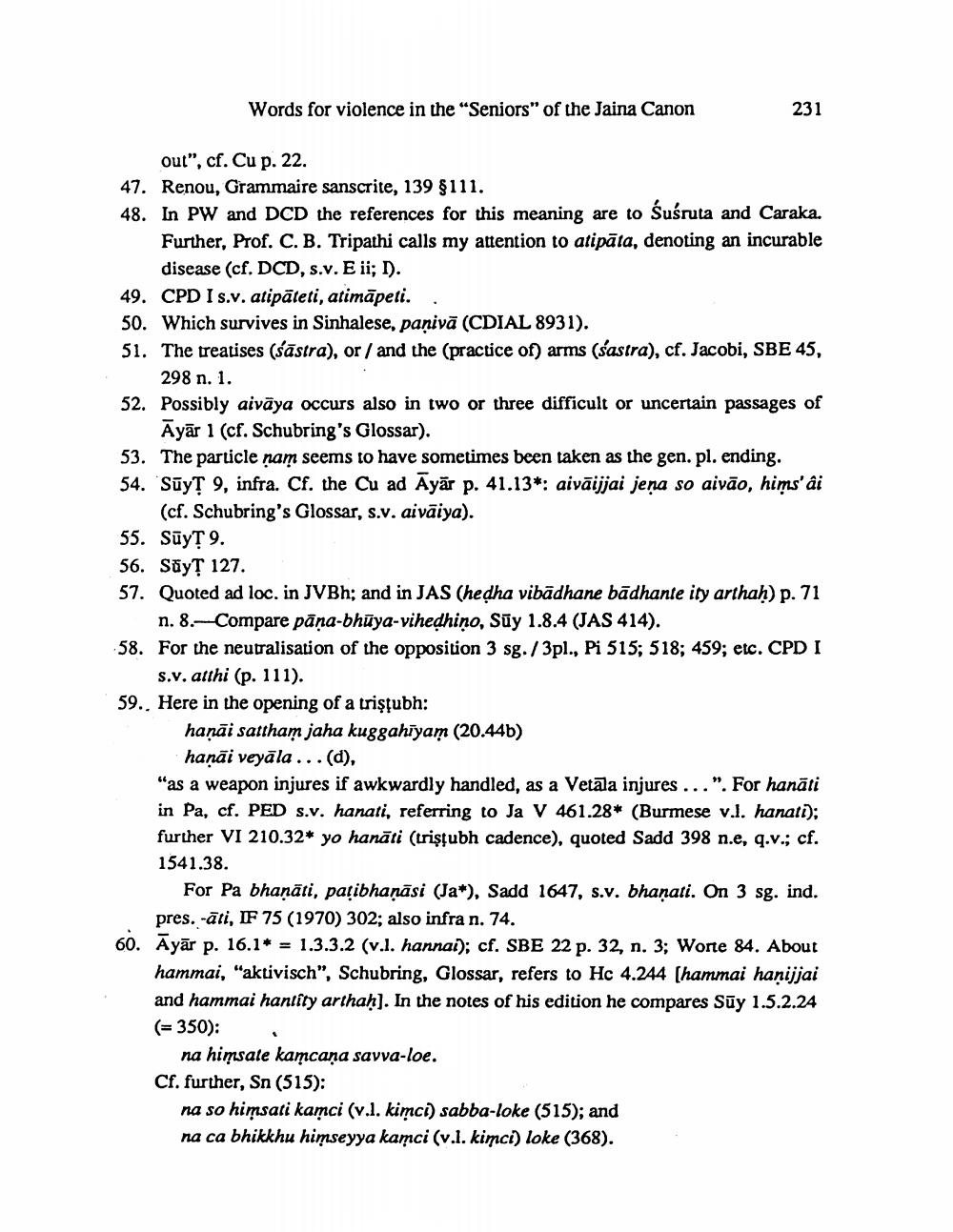________________
Words for violence in the "Seniors" of the Jaina Canon
231
out", cf. Cu p. 22. 47. Renou, Grammaire sanscrite, 139 $111. 48. In PW and DCD the references for this meaning are to Suśruta and Caraka.
Further, Prof. C. B. Tripathi calls my attention to atipāta, denoting an incurable
disease (cf. DCD, s.v. E ii; I). 49. CPD I s.v. atipāteti, atimāpeti. 50. Which survives in Sinhalese, panivă (CDIAL 8931). 51. The treatises (sāstra), or / and the (practice of) arms (sastra), cf. Jacobi, SBE 45,
298 n. 1. 52. Possibly aivāya occurs also in two or three difficult or uncertain passages of
Āyār 1 (cf. Schubring's Glossar). 53. The particle nam seems to have sometimes been taken as the gen. pl. ending. 54. Sūys 9, infra. Cf. the Cu ad Ayār p. 41.13*: aivāijjai jena so aivāo, hims'âi
(cf. Schubring's Glossar, s.v. aivāiya). 55. Sūy? 9. 56. SuyT 127. 57. Quoted ad loc. in JVBh; and in JAS (hedha vibādhane bādhante ity arthah) p. 71
n. 8. Compare pāņa-bhūya-vihedhiņo, Sūy 1.8.4 (JAS 414). 58. For the neutralisation of the opposition 3 sg./3pl., Pi 515; 518; 459; etc. CPD I
s.v. atthi (p. 111). 59., Here in the opening of a trişțubh:
hanāi sattham jaha kuggahiyam (20.44b)
hanāi veyāla... (d), "as a weapon injures if awkwardly handled, as a Vetala injures ...". For hanāti in Pa, cf. PED s.v. hanati, referring to Ja V 461.28* (Burmese v.l. hanati); further VI 210.32* yo hanāti (triştubh cadence), quoted Sadd 398 n.e, q.v.; cf. 1541.38.
For Pa bhaņāti, patibhaņāsi (Ja*), Sadd 1647, s.v. bhanati. On 3 sg. ind. pres. -āti, IF 75 (1970) 302; also infra n. 74. Āyār p. 16.1* = 1.3.3.2 (v.l. hannai); cf. SBE 22 p. 32, n. 3; Wone 84. About hammai, "aktivisch", Schubring, Glossar, refers to HC 4.244 (hammai hanijjai and hammai hantity arthaḥ). In the notes of his edition he compares Sūy 1.5.2.24
60.
(= 350):
na hiņsale kamcana savva-loe. Cf. further, Sn (515):
na so himsati kamci (v.1. kimci) sabba-loke (515); and na ca bhikkhu himseyya kamci (v.1. kimci) loke (368).




